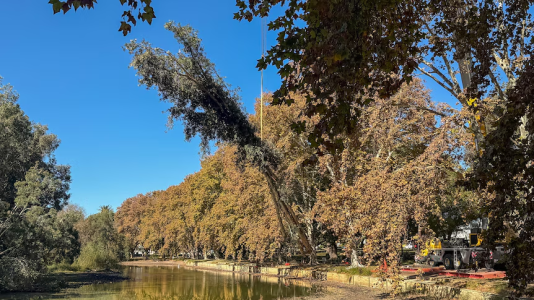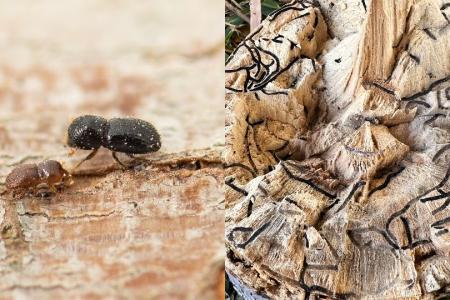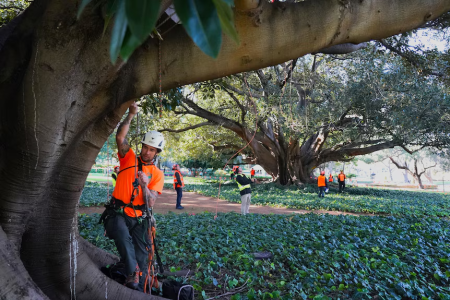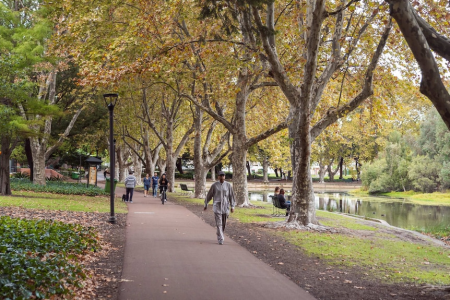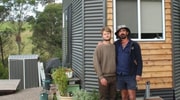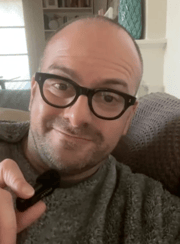Hyde Park islands to be stripped as shot-hole borer infestation takes hold
By
ABC News
- Replies 0
Vegetation on the two lake islands at Perth's historic Hyde Park will be cleared over six weeks, after it was found to be heavily infested with polyphagous shot-hole borer.
The tiny, invasive, tree-killing pest was detected in 2021 and has since led to the destruction of more than 4,000 trees in the Perth metropolitan area as the state government follows an intensive elimination strategy.
Laid out as a classical English garden in 1890 and beloved for its Moreton Bay figs and London Plane trees, Hyde Park has been seriously threatened by the shot-hole borer.
Alison Xamon, Mayor of the City of Vincent, which manages the park, said the loss of so many trees was "crushing", but the council believed that removing the trees and implementing a restoration strategy was the best way forward.
Saving historic canopy
Because the tiny borer beetles can fly, removal of the island's trees is seen as the best way to stop further spread in the park.
"The priority out at Hyde Park is to do everything possible to try to preserve the massive fig trees, which are over 100 years old, and provide the majority canopy at Hyde Park," Ms Xamon said.
Vincent Lanoiselet, chief plant biosecurity officer at the Department of Primary Industries and Regional Development (DPIRD), which is managing the state's response to the borer, said complete removal of the affected plants in Hyde Park was the best option.
"On those islands, we have coral tree and she-oaks or casuarina. There's a couple of melaleuca as well." Dr Lanoiselet told Mark Gibson on ABC Radio Perth.
"That's, unfortunately, the kind of tree that has been found to be infested quite heavily with PSHB [the borer].
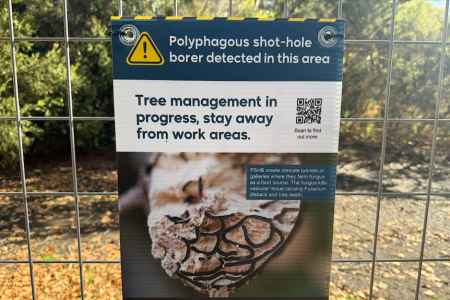
A sign about trees being removed at Hyde Park due to Polyphagous shot-hole borer infestation. (ABC News: Nicolas Perpitch)
Limbs lost but trees saved
Ms Xamon said the efforts to protect the historic Moreton Bay figs had so far been largely successful.
"17 months ago, the state government presented us with a scenario where we were about to lose about 20 massive trees," she said.
"Since then, City of Vincent has worked really hard, with DPIRD and volunteer arborists from ArbWest, to take a more nuanced response to how we're dealing with the polyphagous shot-hole borer, particularly in the plane trees and the fig trees.
"We have had to remove three trees, but the other trees which have been infested, we've been able to simply remove infested limbs rather than going straight to removing the entire tree."
Dr Lanoiselet said efforts to treat some of Hyde Park's trees with insecticide were also ongoing.
"I can tell you that 45 trees within the park have been treated with contact and systemic insecticide as part of an ongoing chemical trial that we are undertaking with the City of Vincent," he said.
The department is also working closely with the City of Canning, in Perth's south, on a trial that involves injecting trees with pellets containing fungicide and insecticide, that has shown promising early results.
Massive winter replanting
In the meantime, the council is focusing on rehabilitation efforts.
Ms Xamon said the City of Vincent had developed a three-year plan for replanting, involving 4,000 trees and shrubs that would be planted on the islands this winter.
"The timing of the removal of the trees is designed to minimise any disruption to the breeding seasons of both the birds and the tortoises that use the islands to breed."
The city will have an animal handler on site during the replanting program to protect birds and tortoises that might remain during the replanting program.
Ms Xamon has reiterated her calls for more government funding to cover the costs of fighting and rehabilitating council parks affected by the borer, saying the final cost of the restoration is likely to be millions of dollars.
"We need to continue to look at addressing this because Hyde Park is not just a park for residents, it's a park for all West Australians."
Written by Emma Wynne, ABC News.

